Rubellite
Rubellite is a captivating and highly prized gemstone that belongs to the tourmaline family. Renowned for its vibrant shades of pink to red, rubellite’s alluring coloration has earned it a place among the most sought-after and cherished gemstones in the world of jewelry and mineral enthusiasts.
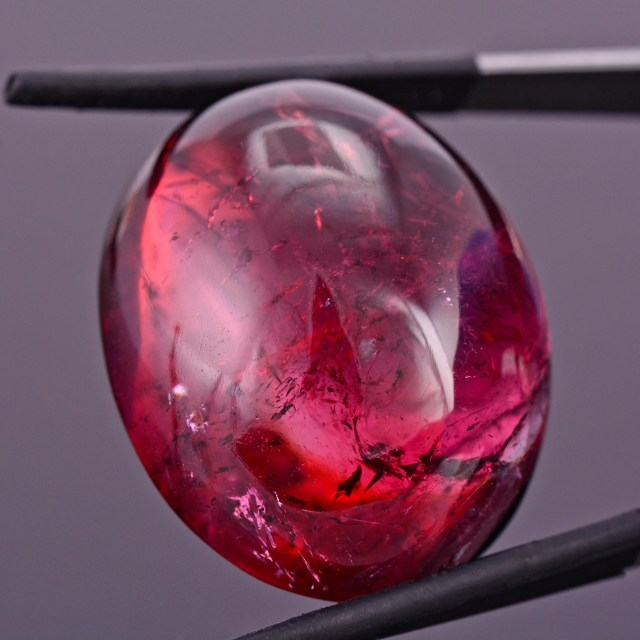
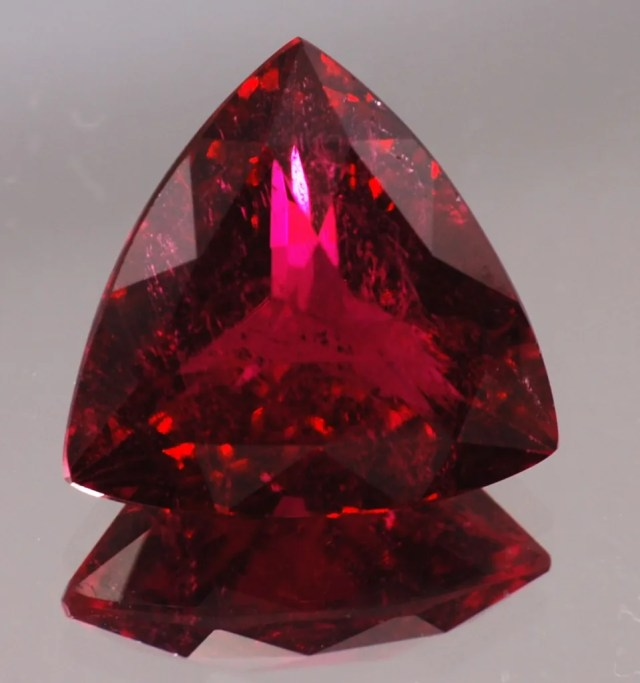
Colorful Allure: Rubellite’s defining characteristic is its captivating range of pink and red hues. The spectrum can encompass delicate, soft pinks reminiscent of blooming flowers, to intense and deep reds that evoke passion and warmth. This remarkable coloration is a result of the presence of trace elements, particularly manganese, within the gemstone’s chemical structure.
Natural Beauty: Mined from diverse locations across the globe, rubellites exhibit variations in color saturation, clarity, and size. Each gemstone possesses a unique personality, often characterized by intricate patterns and inclusions that tell the story of its formation deep within the Earth’s crust over millions of years.
Origin’s Influence: While rubellite deposits can be found in numerous countries, certain regions are renowned for producing exceptionally high-quality specimens. Brazil, for instance, boasts a reputation for yielding rubellites of remarkable color and clarity, contributing to their desirability among connoisseurs and collectors.
Gemstone Family: Rubellite is part of the larger tourmaline family, a group of minerals celebrated for their diverse and kaleidoscopic range of colors. This kinship with tourmalines showcases rubellite’s versatility, as it effortlessly complements other gemstones and metals in various jewelry designs.
Beyond Aesthetics: Beyond its aesthetic appeal, rubellite has historically been associated with metaphysical and healing properties. It is believed to inspire feelings of love, passion, and emotional healing, making it a gemstone with not only visual allure but also potential personal significance.
Crafting Masterpieces: Gem cutters and artisans craft rubellite with precision to maximize its brilliance and color display. The gemstone is often fashioned into a variety of shapes, from traditional cuts to innovative designs, allowing jewelry designers to showcase its natural beauty in an array of styles.
Caring for Rubellite: While rubellite is relatively durable with a Mohs hardness rating of 7 to 7.5, care should be taken to protect it from scratches and harsh impacts. Gently cleaning the gemstone with mild soap and water and avoiding exposure to extreme temperatures or chemicals will help maintain its luster and beauty over time.
In conclusion, rubellite’s exquisite shades of pink and red, coupled with its rarity and intrinsic charm, have earned it a special place in the world of gemstones. Whether as a centerpiece in an engagement ring or a statement pendant, rubellite continues to captivate hearts and minds with its natural beauty and unique allure.
Contents
- Composition and Characteristics
- Geological Formation
- Physical and Optical Properties
- Mining and Sources
- Application and Uses
- Summary of Key Points
Composition and Characteristics
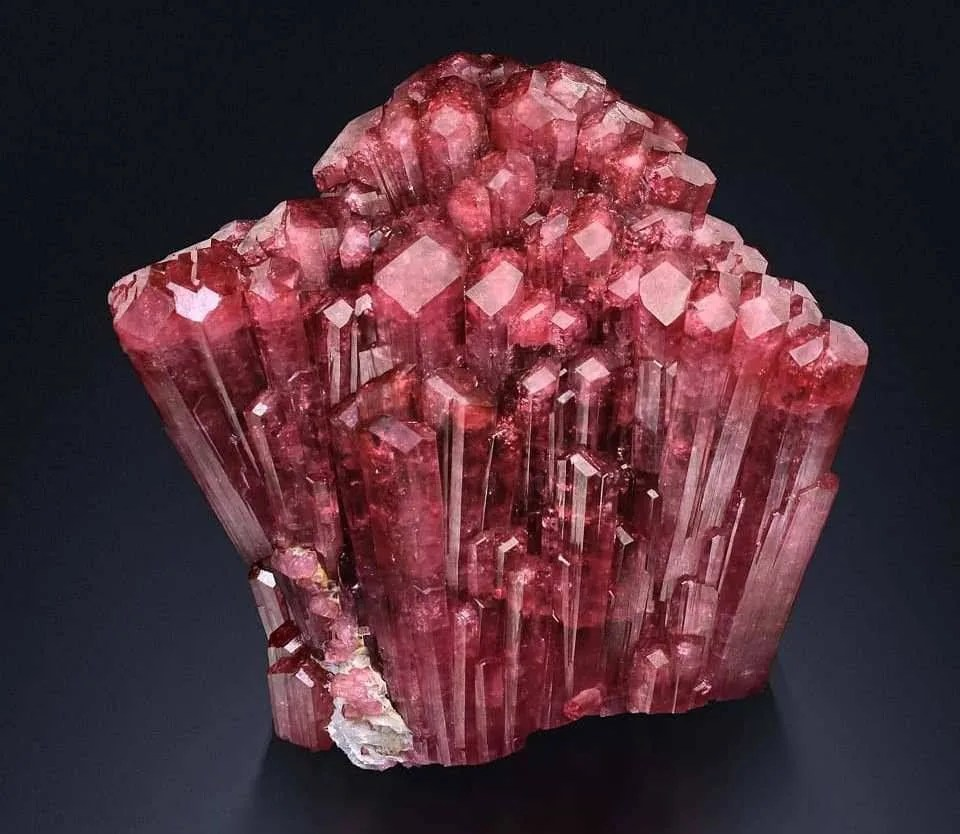
Composition and Characteristics: Rubellite is a specific variety of tourmaline with distinct composition and characteristics that set it apart:
Chemical Composition: The chemical composition of rubellite is similar to other tourmaline varieties, which are complex borosilicate minerals. Rubellite’s chemical formula is often represented as (Na,Ca)(Li,Fe,Mg,Mn,Al)_3Al_6(BO_3)_3Si_6O_18(OH,F)_4. It’s the presence of manganese that gives rubellite its unique pink to red coloration. The concentration of manganese determines the intensity and shade of the color.
Color Range: Rubellite’s color spectrum spans from vivid pink to deep red, encompassing various shades in between. The manganese content interacts with the mineral’s crystal lattice structure, resulting in the wide array of colors seen in rubellite. The finest specimens exhibit a pure and saturated hue with minimal color zoning or variation.
Clarity and Inclusions: Like other gemstones, rubellite can have varying degrees of clarity, from transparent to translucent. Inclusions, such as rutile needles or liquid-filled cavities, are common and can contribute to the gemstone’s character. Some inclusions might create unique visual effects like cat’s-eye or asterism.
Durability: Rubellite is relatively durable with a hardness rating of 7 to 7.5 on the Mohs scale. While it can withstand normal wear, it’s important to avoid exposing it to extreme heat, rapid temperature changes, and strong chemicals to prevent potential damage.
Distinction from Other Tourmaline Varieties: Rubellite stands out from other tourmaline varieties due to its specific coloration and characteristics:
Color Differentiation: Rubellite’s color, ranging from pink to red, distinguishes it from other tourmaline types. For instance, other varieties like green tourmaline (verdelite), blue tourmaline (indicolite), and colorless tourmaline (achroite) exhibit different colors based on their unique trace element compositions.
Manganese Influence: The presence of manganese is a key distinguishing factor. While rubellite contains manganese, other tourmaline types might have other trace elements responsible for their color, such as iron or chromium.
Varietal Names: The tourmaline family encompasses a remarkable variety of colors, leading to the identification of specific varieties based on color or other characteristics. This nomenclature allows gem enthusiasts and professionals to differentiate between the various tourmaline types, including rubellite.
Value and Rarity: Rubellite’s vibrant and intense color, especially in larger, high-quality specimens, contributes to its rarity and desirability. Its value can be on par with or even surpass that of some other gemstones, like certain colored sapphires or even lower-grade rubies.
In summary, rubellite is a distinct variety of tourmaline known for its captivating pink to red color range, which is influenced by manganese. Its composition, color, and rarity set it apart from other tourmaline varieties, making it a prized gemstone among collectors and jewelry enthusiasts.
Geological Formation

Geological Formation: Rubellite, as a variety of tourmaline, forms through intricate geological processes that involve the interaction of heat, pressure, and various mineral-rich fluids within the Earth’s crust. Tourmaline is a silicate mineral that crystallizes in a trigonal system, resulting in its distinctive prismatic shape.
Tourmaline Group Minerals: The tourmaline group encompasses a diverse array of minerals with similar crystal structures but varying chemical compositions. These minerals are categorized based on their color and composition, leading to the formation of different varieties. Rubellite, specifically, belongs to the “elbaite” subgroup within the tourmaline group. Elbaite tourmalines, including rubellite, can exhibit a range of colors due to the presence of elements like manganese, iron, and lithium.
Occurrence and Distribution: Tourmaline, including rubellite, is found in various geological environments and is often associated with granite and pegmatite formations. These formations result from the cooling and crystallization of magma deep within the Earth’s crust. The mineral-rich fluids associated with these processes can deposit minerals like tourmaline as well as other gemstones and minerals.
Geological Processes and Formation Conditions: The formation of rubellite involves complex geological processes and specific conditions:
- Magmatic Activity: The initial stage involves magmatic activity where molten rock (magma) forms deep within the Earth’s crust. As the magma cools and solidifies, it can create pegmatite veins within existing rock formations. These pegmatites are characterized by their exceptionally coarse-grained nature and can provide the ideal conditions for large mineral crystals to grow.
- Fluid Infiltration: Magma contains various volatile elements and fluids that can carry dissolved minerals. These fluids infiltrate the surrounding rocks, bringing with them essential elements like lithium, manganese, and others. As the fluids move through the rock, they can interact with existing minerals, altering their composition and forming new ones.
- Crystal Growth: As the pegmatite cools, the mineral-rich fluids within it begin to crystallize, forming distinct minerals like tourmaline. The growing crystals are influenced by the availability of different elements in the fluids. The incorporation of manganese in the crystal lattice structure results in the vibrant pink to red color of rubellite.
- Pressure and Time: The slow cooling process allows tourmaline crystals, including rubellite, to grow to larger sizes compared to other minerals. The growth can take place over millions of years as the pegmatite gradually solidifies.
- Secondary Processes: After the initial formation, secondary geological processes like tectonic movements, erosion, and weathering can expose the buried pegmatite veins to the surface. This exposes the rubellite-bearing pegmatites to potential mining and collection.
In summary, rubellite’s formation involves the cooling and crystallization of magmatic fluids within pegmatite formations, with the presence of specific elements like manganese giving rise to its distinctive pink to red color. The geological journey from magma to mineral involves intricate processes that span millions of years and contribute to the gemstone’s rarity and allure.
Physical and Optical Properties

Rubellite, being a variety of tourmaline, possesses distinctive physical and optical properties that contribute to its unique appearance and desirability as a gemstone:
Physical Properties:
- Hardness: Rubellite has a hardness of 7 to 7.5 on the Mohs scale, which indicates its relatively good resistance to scratching and abrasion. However, it is important to note that even though rubellite is durable, it can still be susceptible to chipping or fracturing when subjected to strong impacts or pressure.
- Luster: The luster of rubellite is typically vitreous to sub-vitreous, giving it a shiny and reflective appearance when well-polished.
- Crystal System: Rubellite, like other tourmalines, crystallizes in the trigonal crystal system. Its characteristic prismatic crystals can display a wide range of facets when cut and polished.
- Cleavage and Fracture: Rubellite exhibits no true cleavage, meaning it does not break along distinct planes like some minerals. Instead, it shows conchoidal fracture, characterized by curved, shell-like fracture surfaces.
- Specific Gravity: The specific gravity of rubellite typically ranges from 3.02 to 3.26, indicating its density compared to an equal volume of water.
Optical Properties:
- Color: The most distinguishing optical feature of rubellite is its captivating color range, which spans from pink to red. This coloration is a result of the presence of manganese in the crystal structure. The intensity and shade of the color depend on the concentration of manganese as well as other trace elements.
- Pleochroism: Rubellite often displays pleochroism, which means it can exhibit different colors when viewed from different angles. This optical property is more pronounced in certain specimens and can add to the gemstone’s visual complexity.
- Refractive Index: The refractive index of rubellite ranges from approximately 1.603 to 1.655, indicating how much light bends when entering and exiting the gemstone. This property contributes to the gemstone’s brilliance and fire.
- Birefringence: Rubellite, like other trigonal minerals, exhibits birefringence, which is the difference in the refractive indices for light traveling in different directions within the crystal. This property can be observed when viewing the gem through a polarizing filter.
- Dispersion: Dispersion refers to the separation of white light into its spectral colors. While rubellite doesn’t exhibit the same level of dispersion as diamonds, it can still display flashes of color under certain lighting conditions.
- Transparency: Rubellite can range from transparent to translucent. Inclusions and imperfections within the gemstone can influence its transparency and overall appearance.
These physical and optical properties collectively contribute to rubellite’s visual allure and its potential for use in exquisite jewelry designs. As with any gemstone, understanding these properties is essential for both appreciating its beauty and assessing its quality and value.
Mining and Sources

Rubellite, as a variety of tourmaline, is found in various geological settings and regions around the world. The mining of rubellite involves locating deposits within specific rock formations and extracting the gemstone from the Earth. Some of the notable sources of rubellite include:
- Brazil: Brazil is one of the most renowned sources of high-quality rubellite. The state of Minas Gerais, in particular, is known for producing exceptional rubellite specimens. The rich pegmatite deposits in this region have yielded vibrant and valuable gemstones.
- Madagascar: Madagascar is another significant producer of rubellite. The country is known for producing a variety of colored gemstones, including rubellite tourmaline in various shades of pink and red.
- Afghanistan: Afghanistan has also been a source of rubellite. The country’s diverse geological landscape includes pegmatite-rich areas where tourmaline, including rubellite, can be found.
- United States: Certain regions in the United States, such as California and Maine, have produced rubellite tourmaline. These deposits are often associated with pegmatite formations and have contributed to the availability of the gemstone in the market.
- Nigeria: Nigeria is known for producing pink to red tourmaline, including rubellite. The deposits in Nigeria have contributed to the global supply of this gemstone variety.
- Mozambique: Mozambique has also emerged as a source of rubellite tourmaline. The country’s gemstone deposits have attracted attention due to their potential for producing high-quality gemstones.
- Other Countries: Rubellite tourmaline has been found in other countries as well, including Pakistan, Namibia, and Russia. These sources contribute to the worldwide availability of this valuable gemstone.
Mining rubellite involves identifying and excavating pegmatite deposits, which are rich in mineral-bearing fluids. Miners extract the pegmatite material, often through methods like open-pit mining or underground tunneling. Once the rough material is obtained, it is carefully processed and sorted to extract the gem-quality pieces. The rough stones are then cut, polished, and faceted to enhance their visual appeal and brilliance.
It’s important to note that the availability of rubellite can vary over time, and new sources may emerge as geological surveys and exploration efforts continue. As with any gemstone, ethical and sustainable mining practices are crucial to minimize environmental impact and support local communities.
Application and Uses

Rubellite, with its captivating color and unique properties, finds a variety of applications in the world of jewelry and beyond. Here are some of its key uses:
- Fine Jewelry: The primary and most popular use of rubellite is in fine jewelry. It is often used as a center stone in rings, pendants, necklaces, and earrings. Rubellite’s vibrant pink to red color adds a touch of elegance and sophistication to jewelry pieces, making them stand out and attract attention.
- Engagement Rings: Rubellite is sometimes used as an alternative to traditional diamond engagement rings. Its romantic and alluring color can make for a striking and meaningful choice for couples seeking something unique.
- Statement Pieces: Due to its vivid color, rubellite is often chosen for statement jewelry pieces. Large rubellite gemstones can be set in intricate designs to create visually stunning and conversation-worthy accessories.
- Collector’s Items: High-quality rubellite specimens, especially those with intense color and minimal inclusions, are sought after by gemstone collectors. Collectors value rubellite for its rarity, color variation, and the geological processes that create each unique piece.
- Metaphysical and Spiritual Use: In some cultures, rubellite is believed to possess metaphysical properties that can promote emotional healing, balance, and love. It is sometimes used as a healing stone or as part of spiritual practices.
- Artistic Creations: Beyond traditional jewelry, rubellite can be incorporated into artistic creations such as sculptures, decorative objects, and custom-made items. Its rich color can enhance the visual impact of these pieces.
- Fashion and Accessories: Rubellite can also find its way into fashion accessories like brooches, hairpins, and even watch dials. Its color adds a pop of luxury to various fashion items.
- Investment: Some individuals purchase high-quality rubellite gemstones as an investment. Gemstones, especially those with exceptional characteristics, can appreciate in value over time, making them an attractive option for investment diversification.
When using rubellite in jewelry and other applications, it’s essential to consider the gemstone’s hardness and durability to ensure it can withstand everyday wear without damage. Careful handling and proper maintenance will help preserve its beauty and value over time.
Summary of Key Points

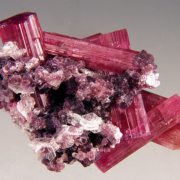
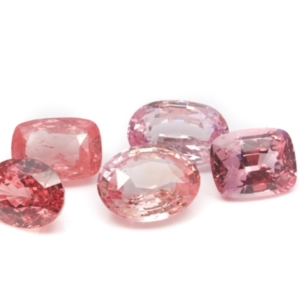
Leave a Reply
Want to join the discussion?Feel free to contribute!